Overcoats are still relatively common in menswear today, of course, especially in cold climates. But, long overcoats, which we’re defining as reaching the knee or lower and that are designed to be worn over a suit, seem to be going the way of the dodo. So, today, we’ll trace five developments that we feel have contributed to the waning of long overcoats.
The Rise and Fall of the Overcoat
By the late 19th century, the overcoat had essentially replaced older outerwear garments like capes and cloaks for everyday use. And the early 20th century was the heyday of overcoats, featuring a variety of cuts and styles for all different formalities and occasions.
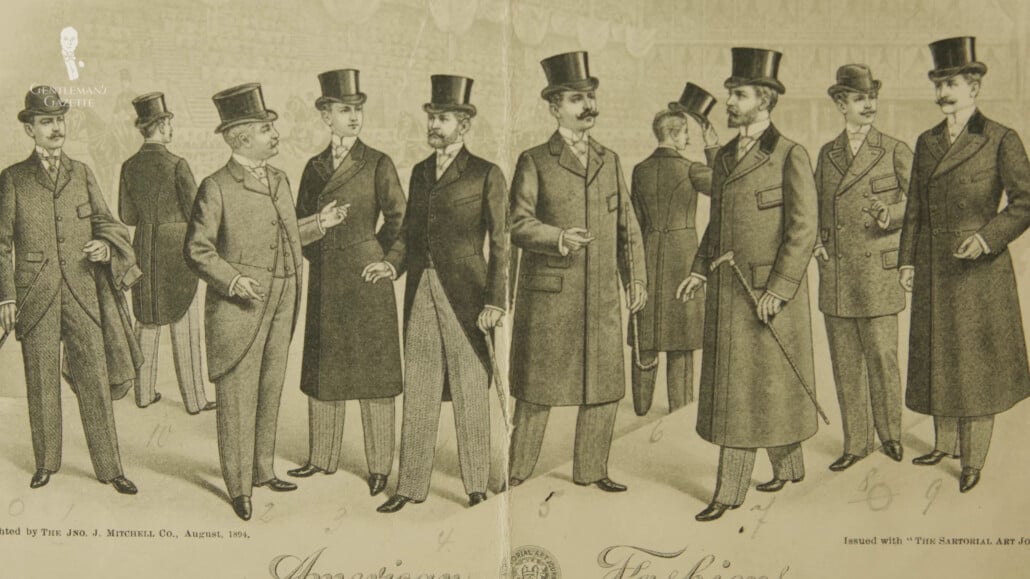
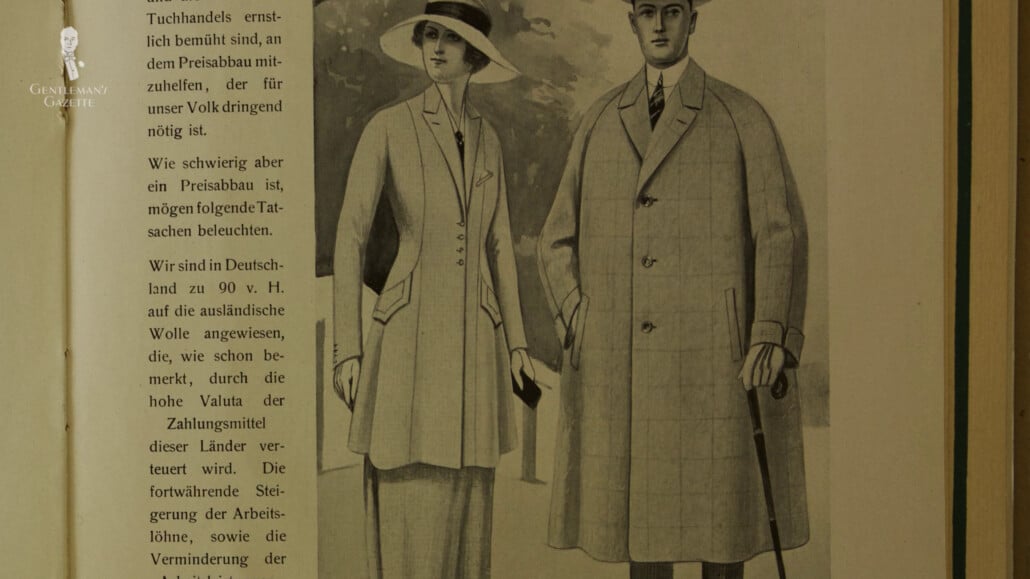
After World War II, shifts in fashion and broader culture occurred that saw long overcoats decline, similar to other menswear articles like hats and ties. Of course, just like hats and ties, some men definitely still do wear long overcoats. We here at the Gentleman’s Gazette are prime examples. But, our long overcoated ranks are much thinner today than they once were. So, how did this happen?
1. Changes in Transportation
The long overcoat evolved from earlier travel cloaks and great cloaks, which were essentially massive swaths of fabric that covered the wearer from head to toe. In addition to insulating the wearer and keeping him warm, these cloaks also protected his clothing. Because many roads were unpaved, they were muddy when it was wet and dusty when it was dry. Mud and dust could easily coat a man’s clothes.
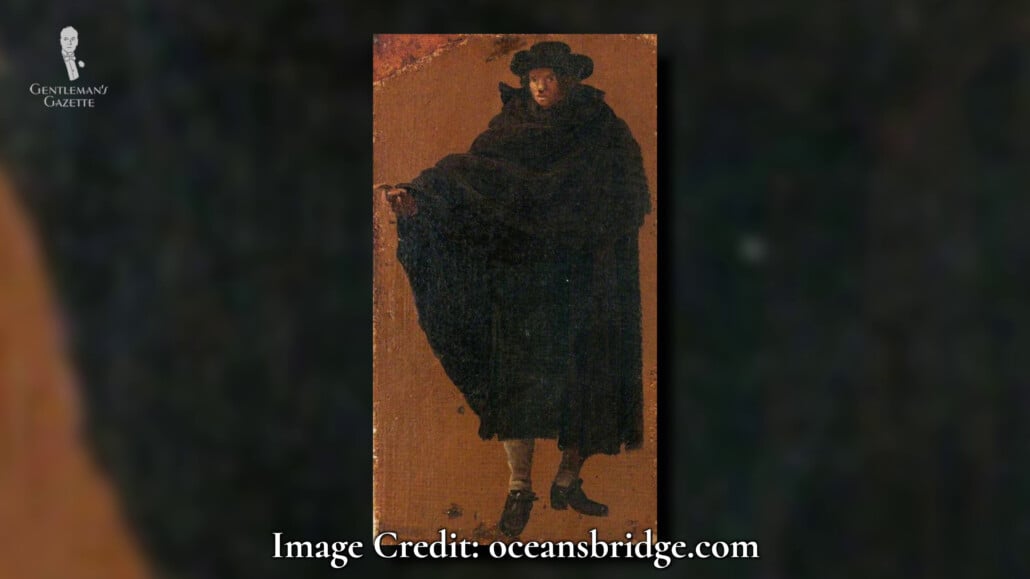
And even as more roads become paved in the 20th century, the longer hems of long overcoats still protected men’s clothes from mud, dirt, rain, and splashing.
Overcoat, Topcoat, Greatcoat, Body Coat – Terminology Explained
Recall that in the early to mid-20th centuries, it was more common for men to walk to work or take mass transit. So, during a trek into the office or to the nearest bus or metro stop, long overcoats both kept men warm and protected their clothing from the elements.
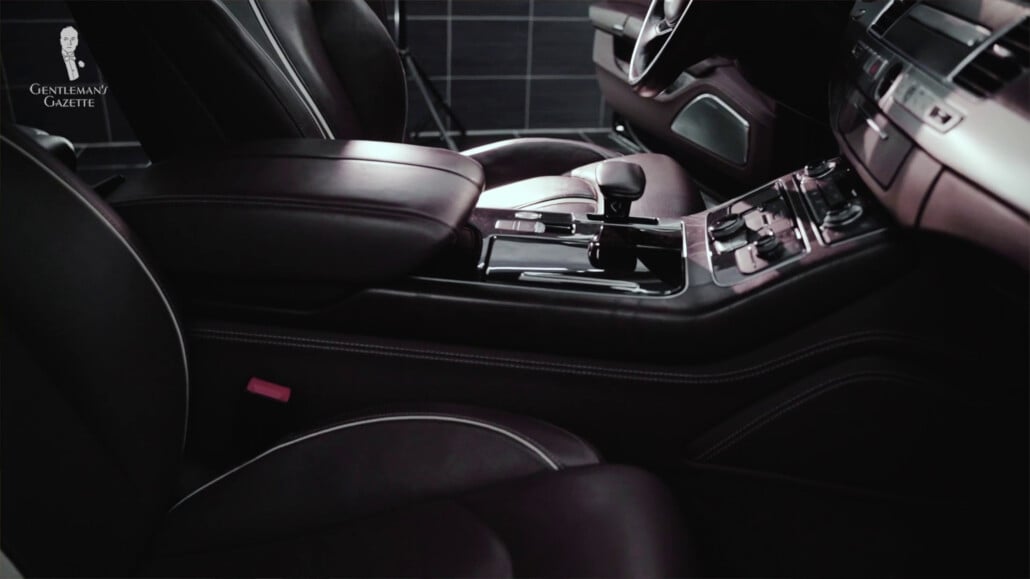
In the latter half of the 20th century, however, individual car ownership exploded, and if you just need to hop into your vehicle to drive to work with a minimal braving of the elements, a long overcoat can be unnecessary and might even be cumbersome. This is especially true as cars – as well as plane and train seating – seem to have been getting smaller over the years with more constrictive, captain-style seats instead of expansive bench seating.
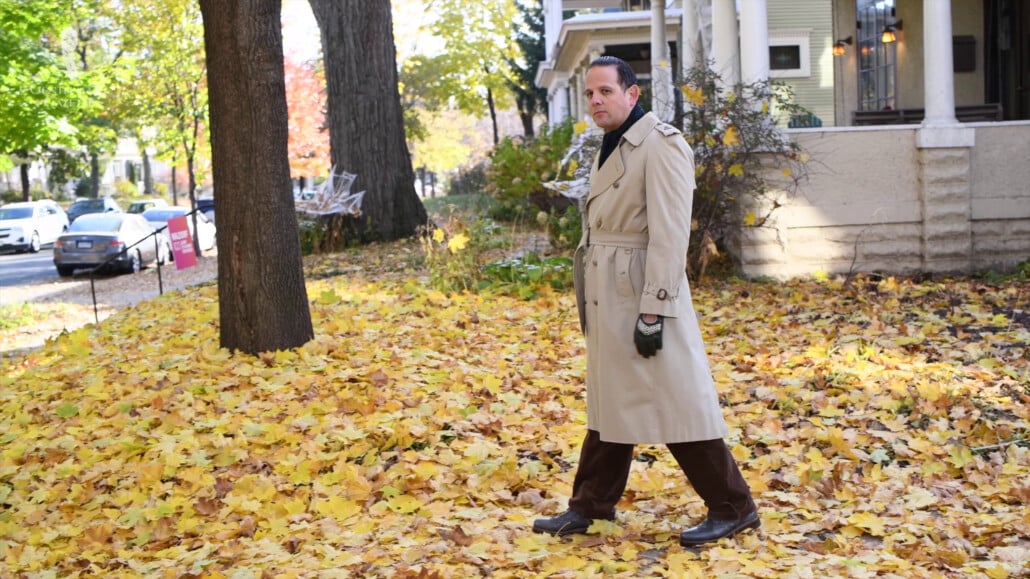
So, as modes of transportation have changed, long overcoats, which were designed to be worn for extended periods of time in the messy elements, have become less essential. But, it’s not surprising that long overcoats have remained popular in areas with both a strong commuter culture and regularly wet and cold weather. These areas include the Northeastern United States, Southern England, and parts of East Asia, especially South Korea, and Japan.
2. Changes in Suits & Coats
Our second main reason for the decline of overcoats is the changes to other styles of coats and suits. Overcoats were originally developed to fully cover the hems of jackets that had longer hems themselves, like frock coats or tail coats. But, as these jackets fell out of favor, it was less important for overcoats to be as long. And while jacket styles were changing, so too were coat styles.
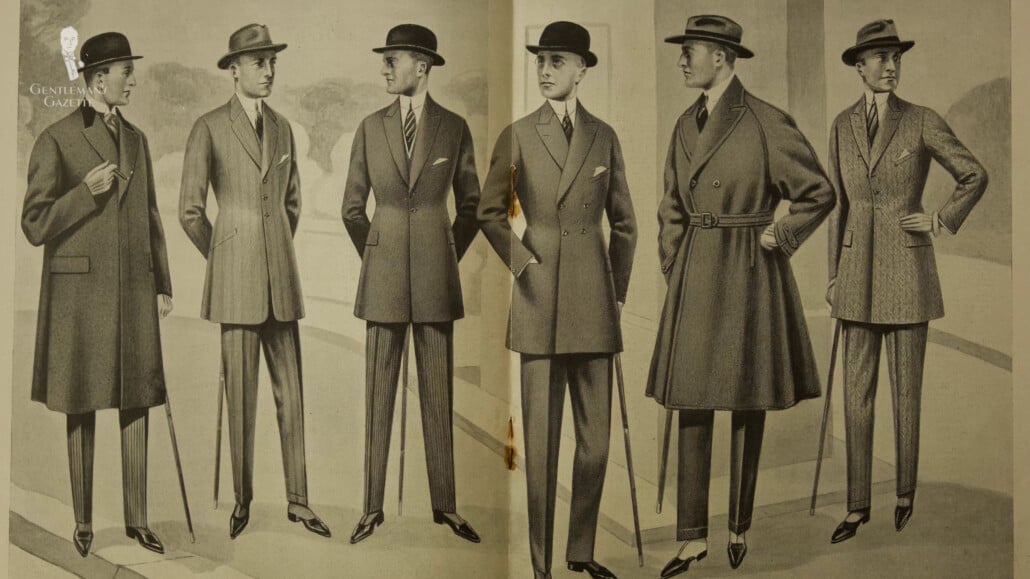
In the early 20th century, overcoats and the closely-related top coats were, essentially, the only appropriate daytime outerwear for public occasions. Other jackets did exist, of course, but they were considered working or sporting garments.
After World War II, though, as menswear generally became more casual, these formerly utilitarian jacket styles – like motorcycle jackets, field jackets, and recreational jackets – became more acceptable to wear in a wider variety of situations, so the overcoat’s monopoly was broken.
7 Casual Jackets for Men (& How To Style Them!)
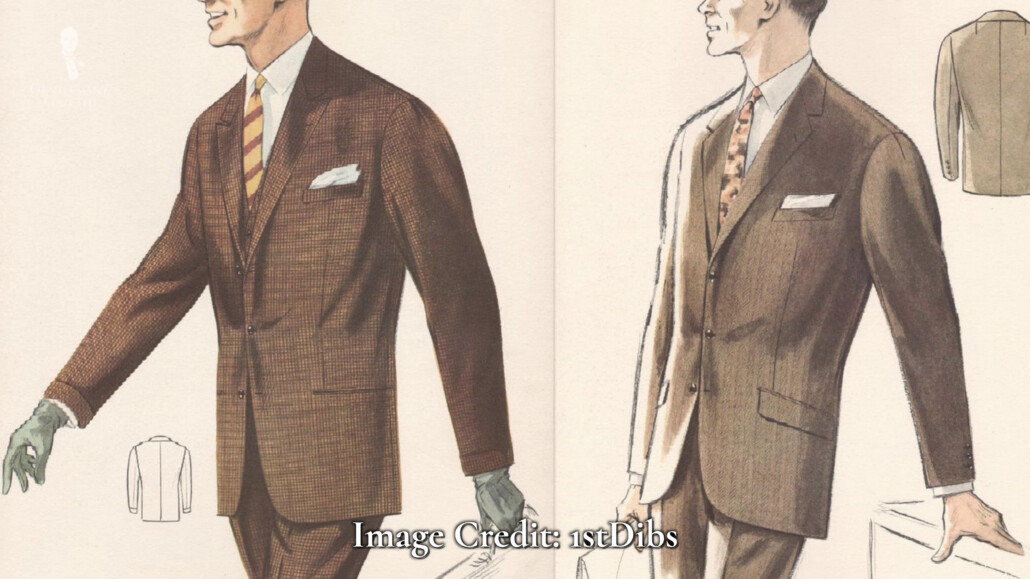
Long overcoats, meanwhile, remained associated with more formal day ensembles that were increasingly seen as stuffy and old-fashioned. This is chiefly because they didn’t complement the increasingly casual leisure suits and sport suits that were popular in the late 1960s and 1970s. And changes in popular coat and jacket styles were hastened by changes in the overall aesthetics of the suit.
The 1960s saw the rise of slimmer, trimmer suits that emphasized an athletic figure. A long overcoat, if poorly cut, could easily distort these lines, and a long overcoat length hid more of a man’s frame. By contrast, shorter coats and jackets in sportier cuts exposed more of a man’s build and, in particular, long, athletic legs.
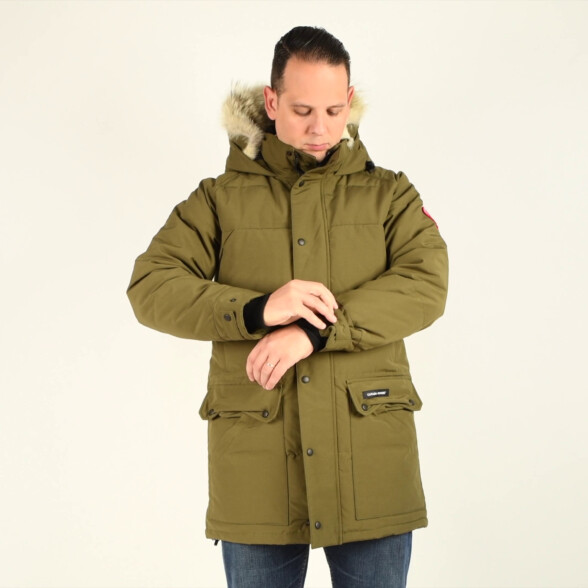
Performance Fabrics
“Performance fabrics” claim to keep you just as warm as a long overcoat with less fabric and coverage.
This trend towards sportier, more athletic outerwear continues to this day and is buoyed by the touting of so-called “performance fabrics” that claim to keep you just as warm as a long overcoat with considerably less fabric and coverage. But, speaking from my personal experience of surviving Minnesota winters, I’ll take a long overcoat that covers my legs any day.
3. General Changes in Menswear
Broadening out a bit from our previous point, our number three factor is general changes in menswear. The appeal of sportier, slimmer, shorter jackets and coats was just one of the many changes that occurred in menswear in the second half of the 20th century into the 21st.
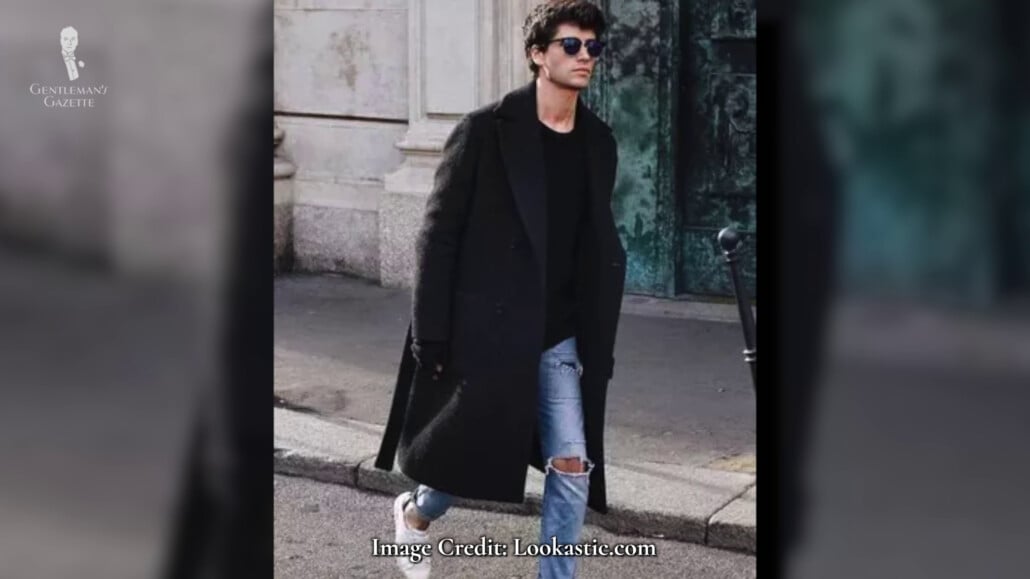
This period also saw the rapid decline of suit-wearing in general, and a long overcoat can look overly bulky when worn without a suit underneath it. Efforts to bulk up the underlayers then led to the pairing of a hooded sweatshirt with an overcoat in a distinct hoodie and Crombie look that is just a bit too early 2000s for us. And at the same time that men were wearing fewer suits, they were also wearing more of other types of clothing.
As the rise of fast fashion in the 1970s saw clothing prices plummet, cheap and casual options allowed men to buy more garments than ever before while paying less. This led to a proliferation of trendy, one-off outfits as opposed to men buying fewer but better-made garments and combining them in different and exciting ways, which is one of our favorite hallmarks of classic menswear.
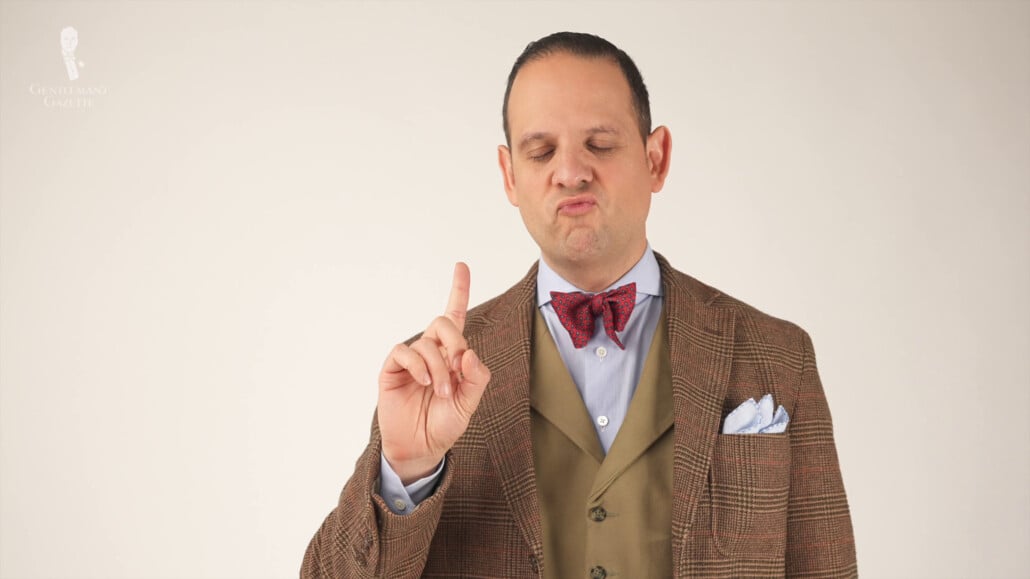
This general trend of downward price pressure on men’s clothing negatively affected long overcoats, which still required more time, materials, and workmanship to create well. So, long overcoats remained expensive at a time when men were less willing to pay more money for one single clothing itegream. Meanwhile, because shorter coats were cheaper to make, manufacturers were happy to pump out more short coats.
So, as classic style gave way to casual style in the latter 20th century, menswear became slimmer, trendier, and cheaper overall. Consumers gave up on having one tried-and-true long overcoat that could go with a variety of ensembles in favor of a large amount of cheaper, flashier coats.
4. Cultural Associations
We most closely associate long overcoats with well-dressed gentlemen in classic style, braving the elements while still looking great. But, not everyone seems to share this association.
Because long overcoats can appear vintage, and many men who wear long overcoats today are older, they’ve developed an association with being old-fashioned or just plain old. This is similar, by the way, to assumptions that many people have about pleated trousers and high-waisted trousers. This association discourages young men from wearing long overcoats and makes the garments seem more dated than they really are.
Also, despite their ability to create a dynamic, inverted-v silhouette with broad shoulders and a narrow torso, long overcoats are sometimes associated today more with women. This may be due in part with hyper-masculine sensibilities being ill at ease with a plush, expansive garment with a low hem, finding it similar to a long dress. But, because several of these stylistic hallmarks of traditional long overcoats – like silk-satin facings, colorful linings, and fur – are today associated with women’s wear, this may also play into this assumption.
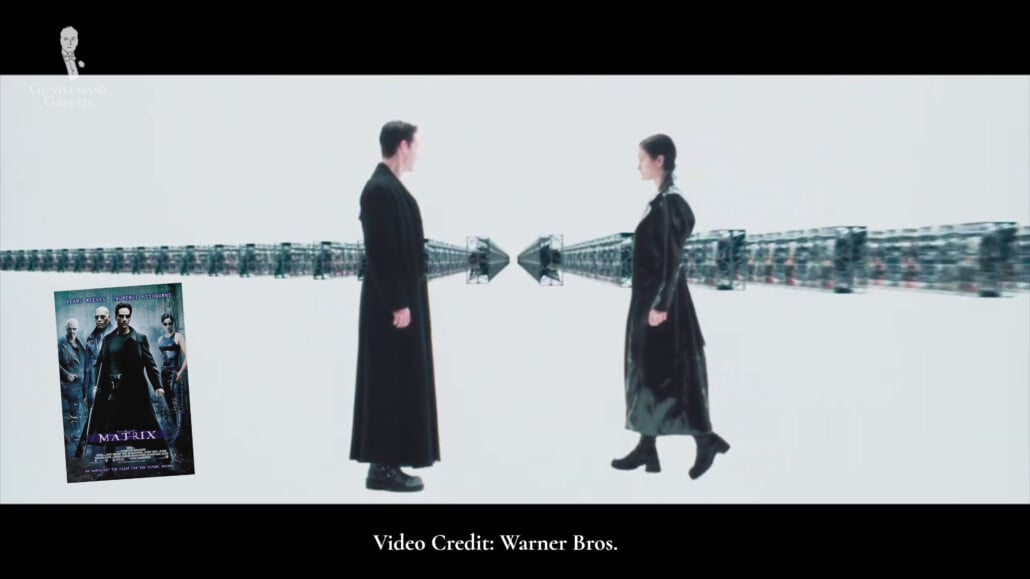
Obviously, you should never let gender conventions dictate what you do and do not want to wear. In a nutshell, you do you. But, this situation is unfortunate because coding long overcoats as effeminate ignores their long history in classic menswear. This, by the way, is one historical detail that the Peaky Blinders television series got right.
Long coats did enjoy a revival in the late 1990s and early 2000s when films like The Matrix and Equilibrium popularized them, particularly among subcultures like punks and goths. Granted, the trench coat is technically a top coat, but a rising tide raises all coats.
However, the desire to avoid the trendiness of the long leather coat phase, as well as to avoid associations with certain cultural subgroups, meant that long overcoats became more stigmatized by the general population in a fate similar to the fedora and the trilby.
Why Did Men Stop Wearing Hats?
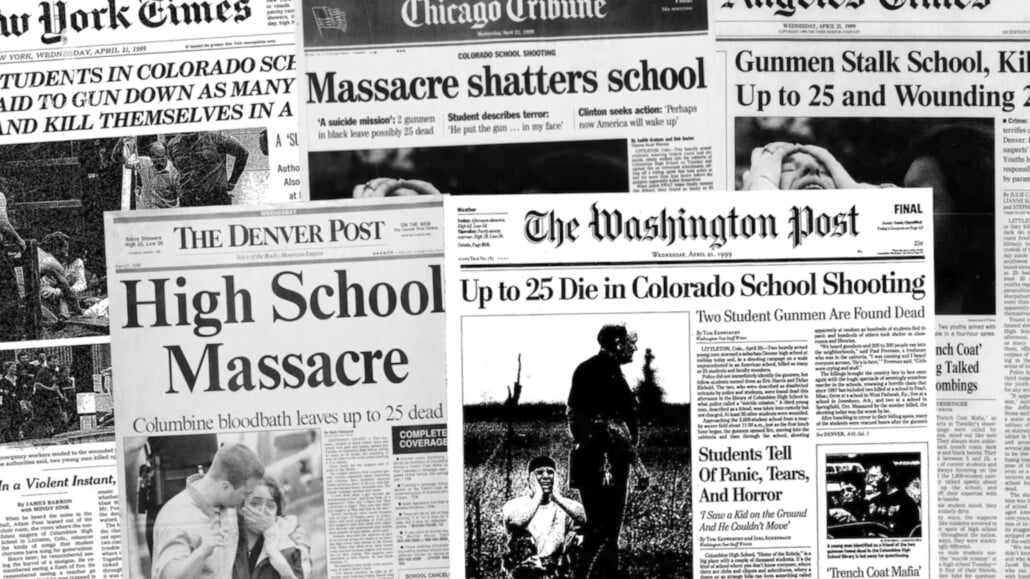
And, more seriously, long overcoats do also have darker cultural associations. The most modern of these would be their association with the 1999 Columbine tragedy, whose perpetrators called themselves “The Trenchcoat Mafia.” This, in fact, led to a ban on long coats in many schools.
Going further back in history, long overcoats were closely associated with the military in general, and these martial connotations were enough to make many in the anti-war movement of the 60s and 70s not want to wear long coats.
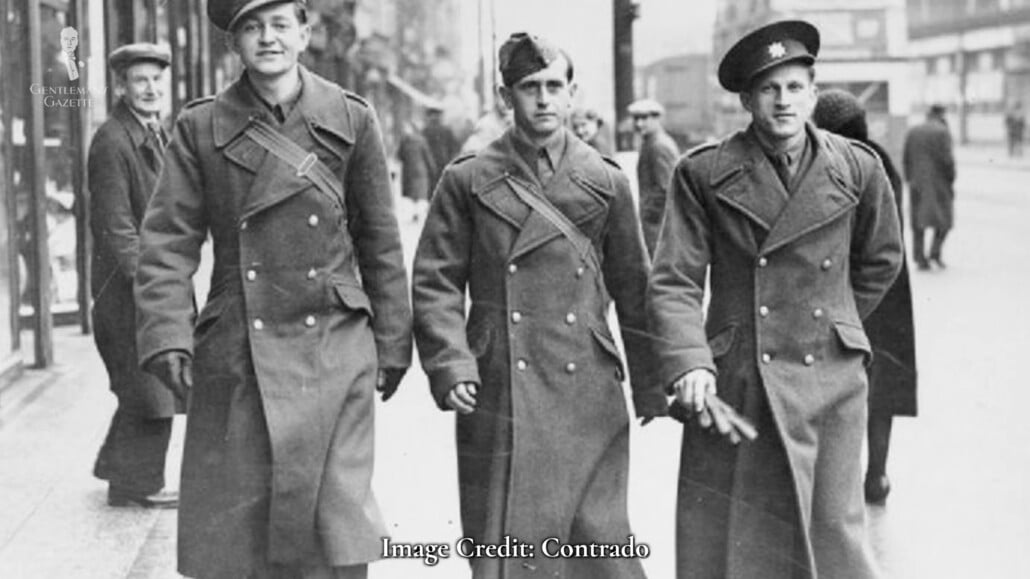
And today, long black overcoats and leather trench coats are closely associated with the German military in World War II and national socialism more broadly. This has led many men to avoid wearing them for fear of being associated with the neo-Nazi movement. And it’s likely that these associations, coupled with their somewhat foreboding appearance, explain why long dark overcoats have been the favorite wardrobe choice of many movie and TV villains for some time.
Of course, you shouldn’t let assumptions about any generic article of clothing dictate whether or not you wear it. But, it can be helpful to be aware of all of these associations.
5. The Disappearance of Coat Culture
Our fifth and final reason today why the wearing of long overcoats declined is the overall disappearance of coat culture.
All of the shifts we’ve gone over in our list today came together to essentially remake the world in a way that was inhospitable to long overcoats. Improvements in both vehicle and building heating made wearing long overcoats to keep warm somewhat superfluous.
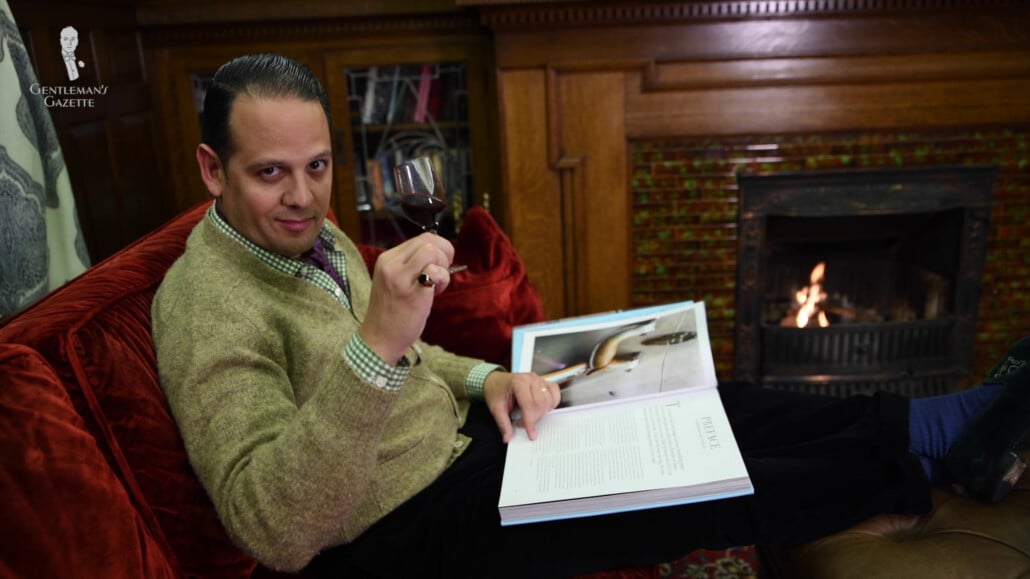
In the past, men often kept their overcoats on while in their cars. But today, if you go from your well-heated home to your well-heated car to your well-heated office, you might not feel the need for a long overcoat.
And because long overcoats were increasingly seen as superfluous, the attendant services associated with them also began to disappear. For instance, 75 years ago, nearly every restaurant, club, and office building had a coat check or at least a coat rack. You might be able today to drape your casual jacket over the back of a chair, but a long overcoat is likely to become a puddled mess in this situation.
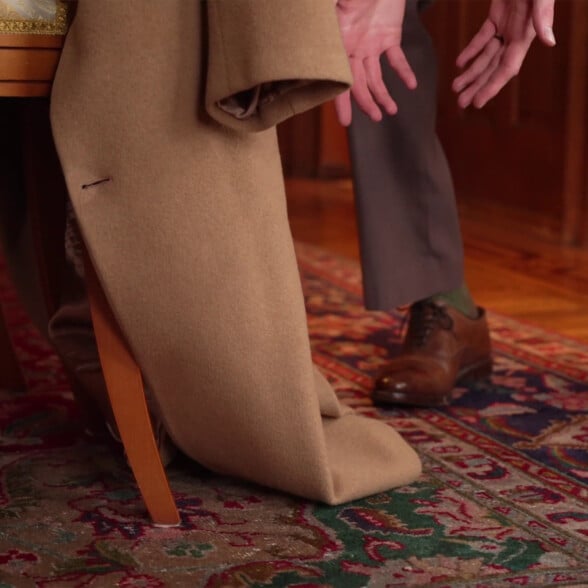
Puddled Mess
Without a proper coat rack or coat checks in restaurants, hanging overcoats over the back of a chair creates a puddled mess.
Wearing a long overcoat is much more troublesome if you can’t store it because a coat check doesn’t exist, is an additional expense, or isn’t well suited to the storage of long overcoats. I, for one, don’t feel like bundling up my camel hair overcoat and shoving it into one of these lockers.
As long overcoats disappeared from society at large, they also began disappearing from stores because of poor sales, coupled with the additional expense required to make them. Reduced availability created a vicious cycle where men weren’t buying long overcoats because they were harder to find; they were harder to find because manufacturers weren’t making and stocking them, and they weren’t making and stocking them because men weren’t buying them.
As a prime example of this, consider evening overcoats, which were once a mandatory component of cold weather Black Tie and White Tie ensembles.
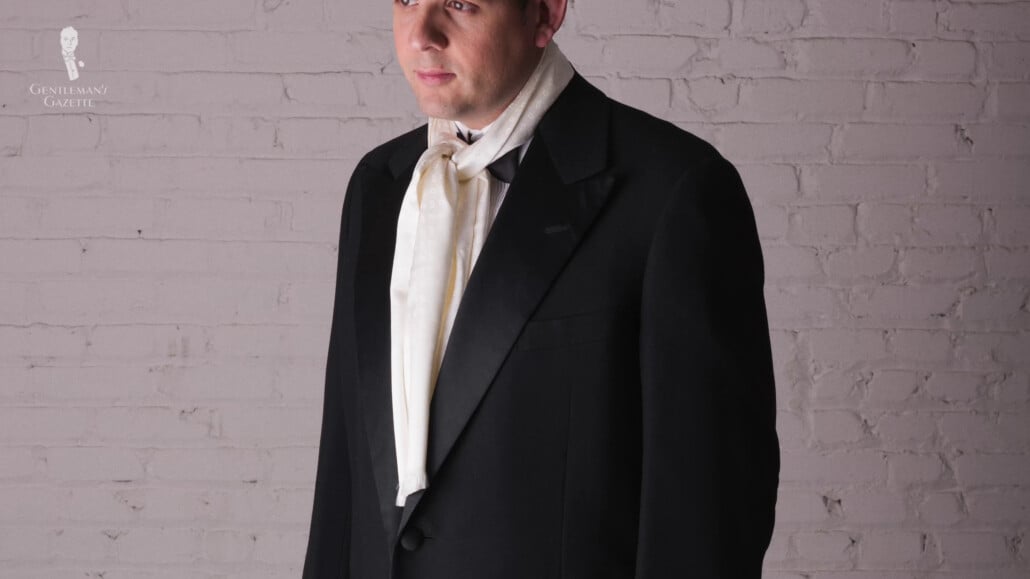
Today though, they’re almost impossible to find and have to either be made bespoke or found secondhand, which is where Raphael found his. I suppose that’s one good thing about long overcoats falling out of style, many more options at thrift stores for us.
Why We Still Love Long Overcoats
With all that said, then, there are several factors that seem to disincentivize wearing long overcoats today, which underscores just how great they are if we’re willing to overcome all of these obstacles to still wear them. So, let’s wrap up on a positive note by sharing why we still love long overcoats.
First, they remain the best and really the only correct outerwear to pair with the most formal of ensembles. They complement both your figure and the rest of your outfit and pair effortlessly with so many classic looks.
Long overcoats are ideally proportioned to be worn over suits, so they don’t have that stretched-out, overburdened look that more modern coats can have when worn with several layers underneath.
Long overcoats also come in a bevy of unique styles like the Chesterfield, loden, Ulster, or paletot to suit your own proclivities and needs.
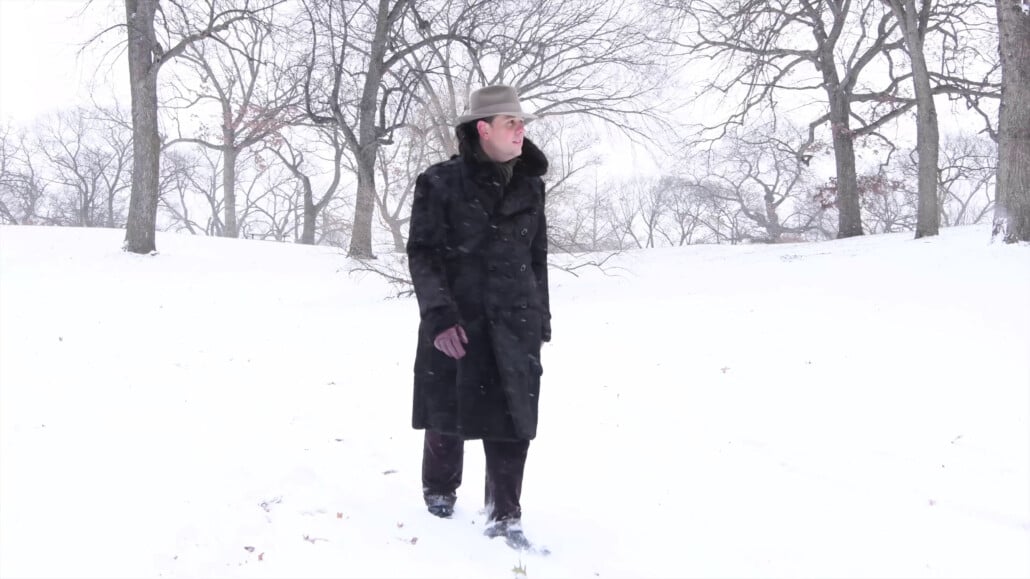
And finally, nothing helps keep your body warm and insulated like a heavyweight, long overcoat that covers your legs when combined with other classic accessories like scarves and gloves. So, even if my bus is late on a frosty February morning in Minneapolis, I can stay warm and toasty on my commute, and it doesn’t hurt that I look great, too.
Conclusion
So, now that you’ve learned why long overcoats have fallen out of favor with most men today, we hope that we’ve effectively dispelled any stigma or assumptions that you might have had about them.
And if you’d now like to add some long overcoats to your own wardrobe, we’ve got a dedicated guide on that topic.
How To Buy An Overcoat
Despite their decline in popularity then, there’s still a lot to love about long overcoats, and they pair so well with so many different classic outfits.
Do you still wear long overcoats? Share how you like to style them in the comments section!
Outfit Rundown
Today, I’m wearing my favorite long overcoat in my collection, a camel hair model. To complement its tan color, the rest of my outfit has been assembled in tones of brown and green.
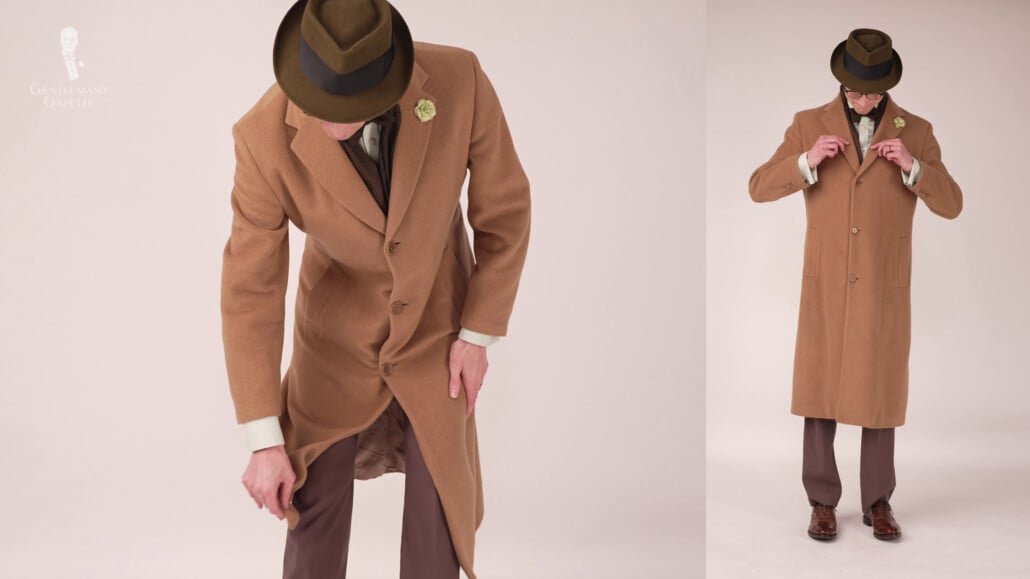
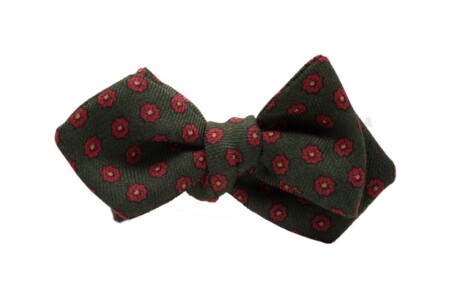
Fort Belvedere
Wool Challis Bow Tie in Olive Green with Small Geometric Pattern in Red and Orange – Fort Belvedere
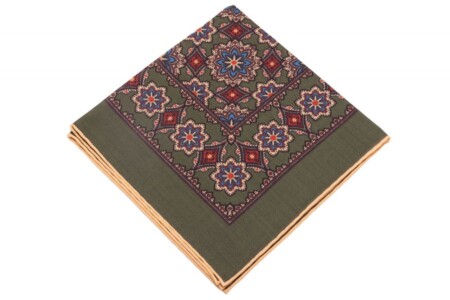
Fort Belvedere
Moss Green Silk Wool Pocket Square with Printed geometric medallions in blue, red, black with eggshell contrast edge by Fort Belvedere
My French cuffed shirt is in a stair-step weave of green and white and, into its cuffs, I’ve inserted our gold-plated, sterling silver, eagle claw cufflinks with tiger’s eye as the stone to reinforce the brown color feel. Of course, this overcoat would go well over a camel hair jacket like the one I’m wearing.
Meanwhile, my trousers are plain brown with a reddish undertone to them, and my shoes are medium brown cap-toe Oxfords from Allen Edmonds.
In addition to my cufflinks, the remainder of my accessories is also from Fort Belvedere today. We’ll start with my socks, which are two-tone shadow-stripe models in mid-brown and green. The boutonniere, which I’m wearing in the lapel of my overcoat, is our Oscar Wilde green mini carnation and my bow tie in wool challis is in an olive green chain featuring a repeating medallion motif in tones of red and orange.
And for a bit of outerwear flare, I’m wearing a vintage, short-brimmed fedora in olive green. And one more Fort Belvedere accessory: a reversible wool-silk blend scarf in tones of red, green, and orange.
The scarf has a checked pattern on one side and a repeating geometric motif on the other. So, you can wear it in whichever way you desire to show off both patterns or just one. And to find all of the Fort Belvedere accessories I’m wearing today, as well as a wide variety of others, you can take a look at the Fort Belvedere shop.
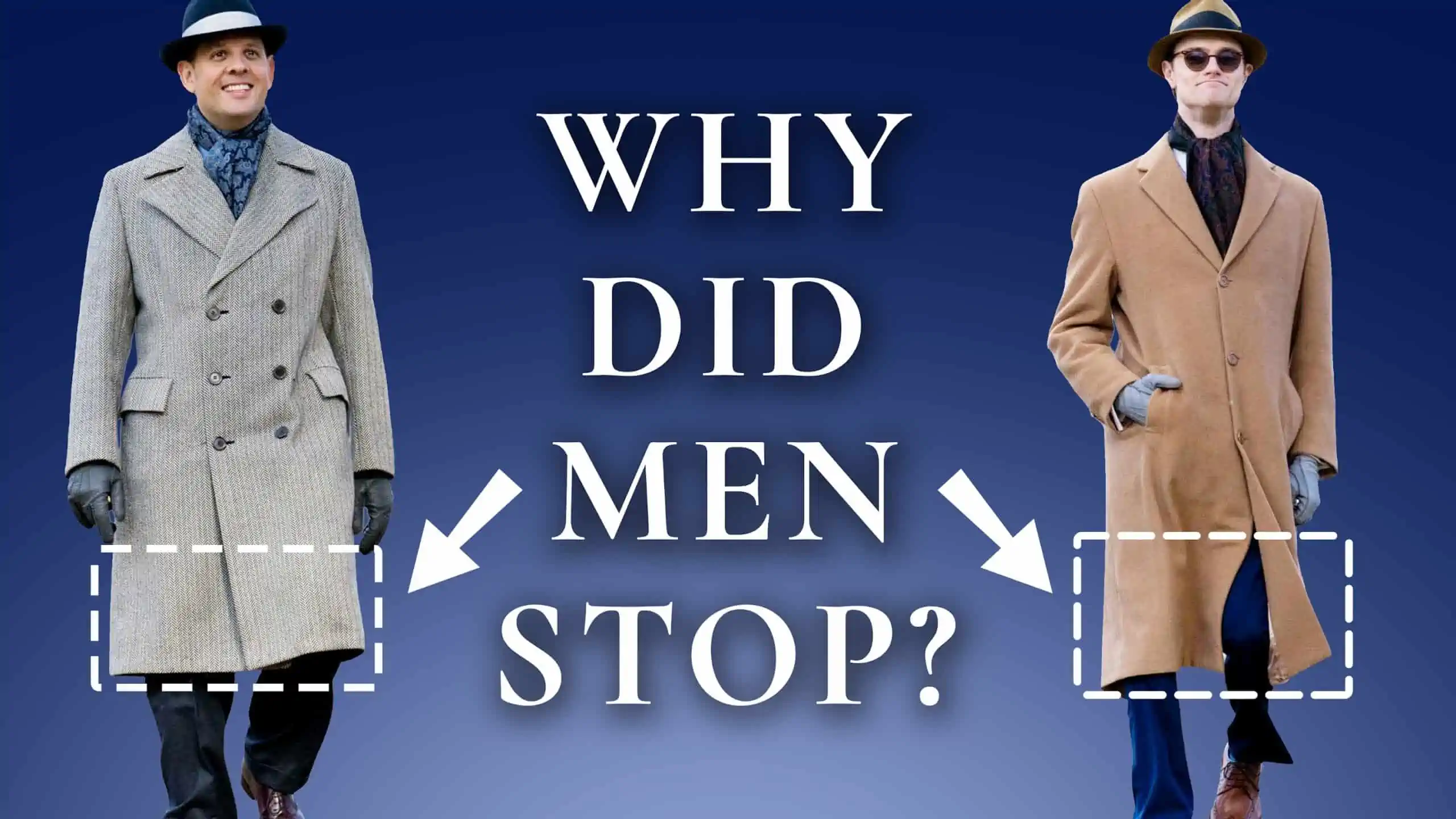
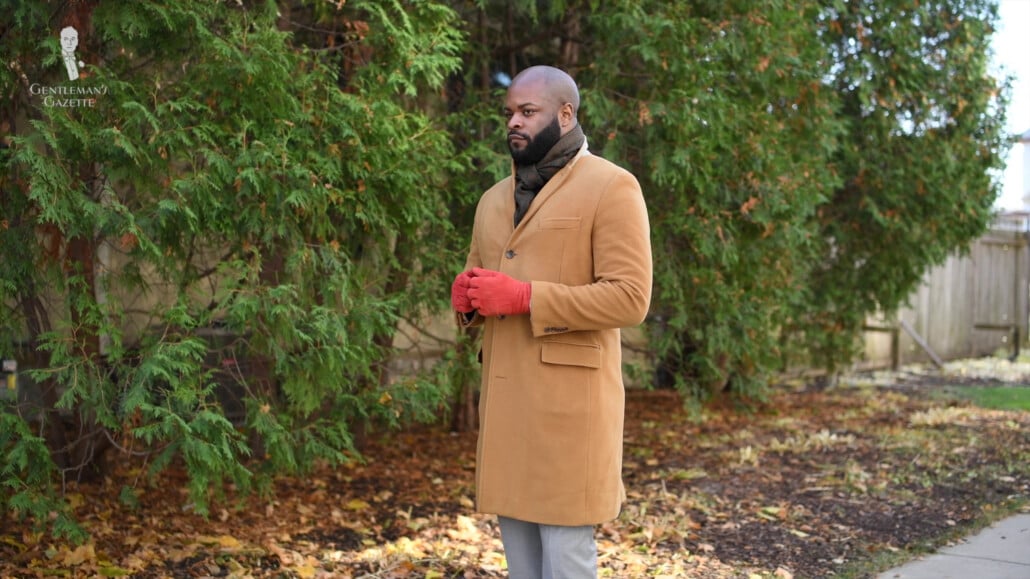
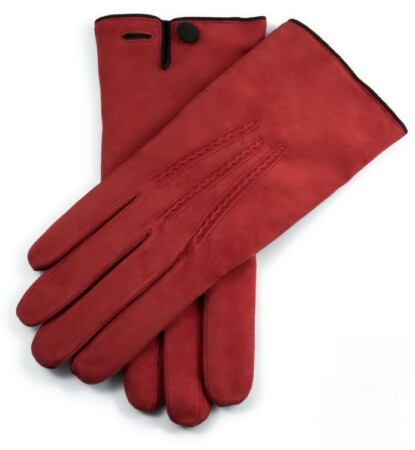
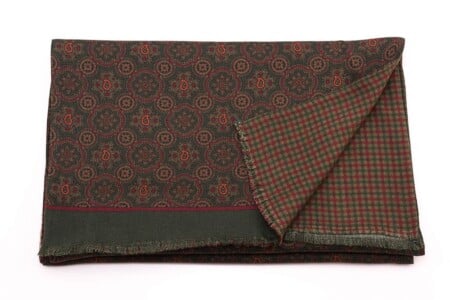
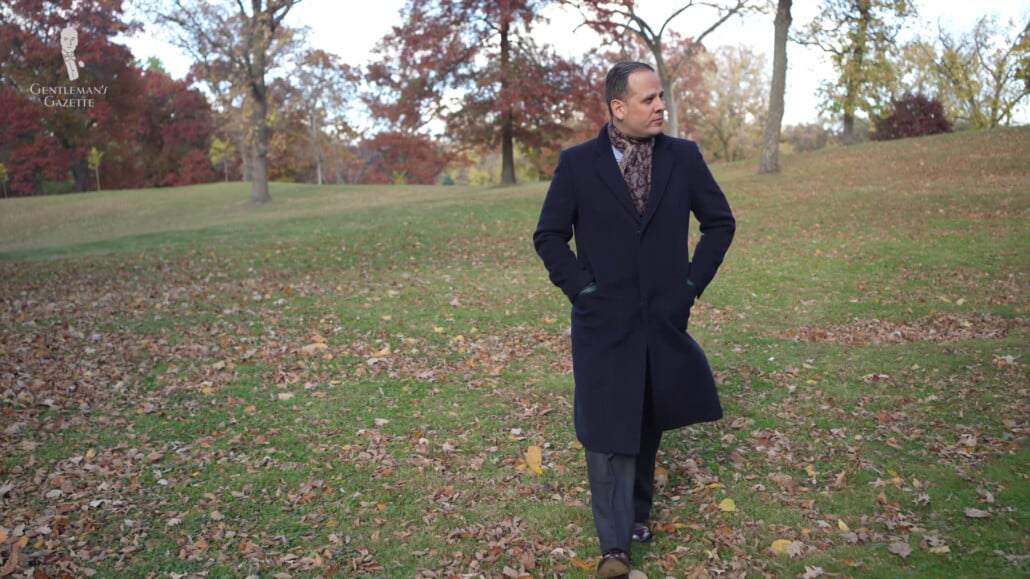
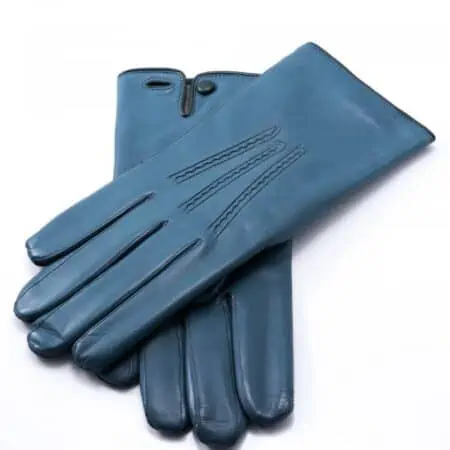
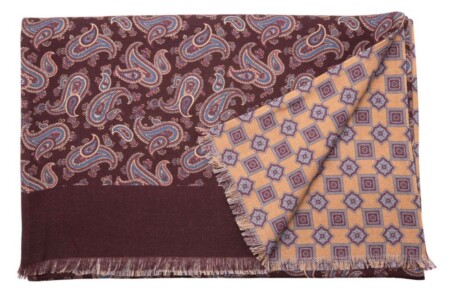
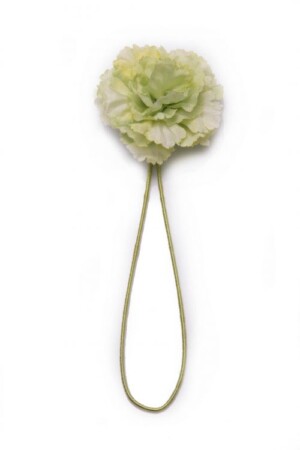
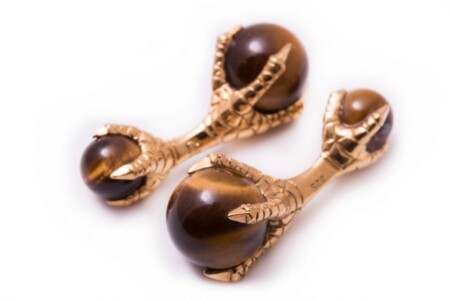
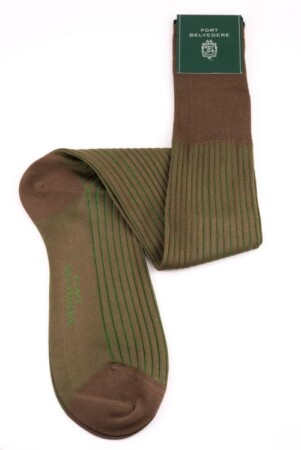
I LOVE my overcoats (I have three). As someone who only stands 5’6″ tall and on the portly side, I find that a long overcoat really compliments my silhouette and looks great with my Fort Belvedere gloves and scarf
How marvelous, thanks for sharing, Steve!
This article exposes a coverup in which many bodies were hidden.
Courageous reporting!
I own a Tailor-Made Long Overcoat that was made by an Italian
Master tailor. It’s black and made of high quality fabric. If
there are those out there who don’t like it, to hell with them.
I still have my fathers overcoat from back in the 60’s! Hart Schaffner Marx, tailored in Italy. A real beauty.
I wonder if Eisenhower is at least partly responsible for the eclipse of the long coat. The famed “Ike jacket” replaced the long army overcoat in the immediate post-war era, and perhaps helped lead to the decline.
Many militaries were already out to ditch the overcoat in the inter-war era, going over either to layered systems (M43) or a dedicated winter suit like telogreika, both are much easier wearing whilst active.
In certain respects this did undermine civilian overcoat wear, as garments like the M-51 (beloved of mods) and the oranged-lined N3B (beloved of 70s school kids) filtered into civilian life and introduced overcoat alternatives to that section of the population who didn’t need a long coat as a matter of formality.
I love my vintage overcoats from the 1970s. I have a wool, navy, Swedish one and a brown tweed belted double-breasted one that is similar to one I’ve seen Raphael wearing in the past.
I spent a long time looking for an overcoat that (1) extended below the knees and (2) was of some light-brownish color other than camel. I had no luck with new items: everything that I found was either too short or of one of the too-familiar colors: gray, black, navy, and camel. I finally found one at Keezer’s in Cambridge that had been made, as the salesman estimated, in the 1970s for sale by the Harvard Coop. As it was a full two sizes too big for me (42 when I wear a 40), I paid more to have it cut down to fit me than I paid for the coat. But it was still money well spent, as even with the tailoring it was much cheaper than a comparable new item would have been, if such an item could ever have been found. The coat is double-breasted and belted, and almost identical in color with the overcoat worn by the woman who appears in the photo on the left at 10:33 in the video.
Preston at 13:01: “foreboding appearance.” For shame, Preston! Perhaps you meant “forbidding appearance.” The appearance of a coat may induce foreboding in others, but it can’t “forebode” someone, whatever that is supposed to mean.
A “foreboding appearance” is an appearance which induces foreboding in the viewer. It is a perfectly correct phrase.
It will seem a bit daft that someone living in Australia needs even one short coat, but I’ve got three long overcoats and wouldn’t swop them for quids.
The most used is a wool, mohair, mink blend from Gannex.
For cooler Spring and Autumn nights I use a bespoke wool mix from iTailor
But when it really cools down (well…below 3C that is) I’ve got a Loden mid calf from Salko, Austria, which has the added benefit of being water repellant.
Of course, it puts the front of house staff in tizz when they need to deal with these in a restaurant, but then they’ve got to look after the accompanying hats in any case.
Come to think of it, the only places I go to where they have thought ahead about hanging hats, coats and umbrellas are a French Bistro and Belgian Brasserie
Don’t be too hasty to assume all of Australia is like Queensland or Western Australia or Alice Springs. Even if Australia doesn’t get the snow that you get in the USA, its southern states (especially Tasmania) can get very cold and even some snow in rural or mountain areas.
Ever since I’ve started watching your video’s I paid close attention to the overcoats. I knew what to look for, why they are great and how to accessorize them for greater appeal.
Now, I don’t own the best of the best. But I did score a DAKS overcoat, double-breasted, brownish (very rare color!) from the ’70’s. I get many a head turned when I wear it, combined with my stylish 8-panel flatcap and matching scarf.
I believe the fabric is loden. It holds great against rain, snow and wind. When it gets really cold, I put a Harris tweed jacket underneath and maybe a merino wool pullover. I couldn’t do without
now.
But my aim is to fulfill my long wish of a double breasted navy colored overcoat with a half belt. Similar to army/marine/airforce models. I would accessorize it with a silver grayish rabbit fur felt fedora. Probably a Mayser, but who knows…
At 76 it is good to know that I can still be on trend. I have a number of overcoats in black, navy, camel, and houndstooth, two of them from the Welsh Toast Company, two lightweight coats with felt collars and one Matrix leather coat bought in a sale and worn once. I am 6’11/2″ tall and all of them are below the knee. Worn mainly for funerals and formal events. I have now given my two Burberry long macs to my twin granddaughters at university who wear them around London. I occasionally wear a Ralph Lauren Black Watch long mac, and a RL navy long mac which is the most waterproof coat I have ever worn. These days I tend to wear Barbours which are ideal for the wet weather of the south coast of England. Before I retired, I could have been a Gentleman’s Gazette poster boy with decent suits, shirts and proper shoes and hat. These days it is Levi 914s, Guernsey jumpers and Barbours. You may wish to include the Guernsey if you do an article on jumpers or sweaters as you call them across the pond. Keep up the good work.
Actually I am about to bring my overcoats to my tailor to see if they are salvageable or not, and if not, I will miss them and be on the hunt for an extra long overcoat. Regardless, thanks for the article and other content on your site. Have a great day. Stay safe and stay awesome. Gerry :)
I still wear a long overcoat. I refuse to be a part of the so-called causal dress group. Coat and time to church and other places.
wear what fits you best
I hate the short overcoats but, at less in Spain, it’s almost impossible to get longe overcoats. Afortunately, I still keep my black longe overcoat.
Some of my favourite articles of clothing are my Boglioli overcoats, of which I own several. Thankfully, Boglioli still makes roomy, well tailored, past-the-knee length overcoats in many styles, from wool duffle coats to cashmere dress coats, in various fabrics and colours. There’s nothing like warm comfort of a proper, long overcoat when walking the dog on a winter’s day.
It’s worth pointing out that it’s actually rather easy to find traditional long overcoat styles from retailers based in the U.K. either vintage or new. I wear long overcoats religiously and the number one thing I love about them is that they help keep your legs warm, especially when it’s windy. You really notice this when wearing a peacoat or short topcoat in the warmer weather. I think people stopped wearing long coats really just as a matter of practicality and comfort. The number one complaint I hear about long overcoats is they’re relatively heavy, bulky and restrict the sort of things you can do compared with a newer style such as a modern zip-up jacket. 3/4 of my coat collection are long overcoats, and my favourite one is a vintage Chesterfield coat from England in a dark charcoal. It works well with many outfits and never fails to attract a compliment or two.